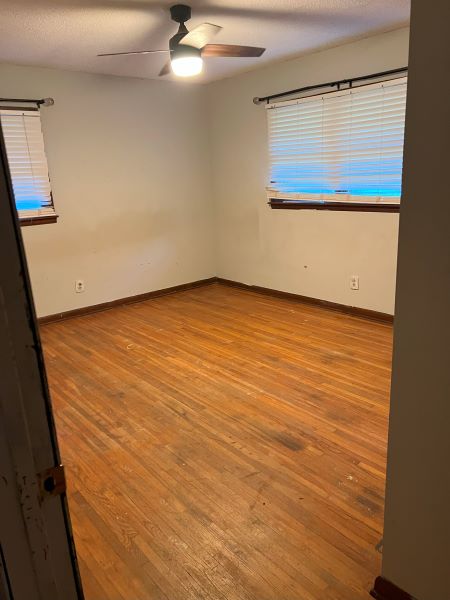
Leaving the car at home and using a bike for local errands can of course save you money. Can it save time, too? Photo: Rob
Recently, it was announced that a grocery store is opening within two miles of my home. This is actually pretty good news for me as, prior to that announcement, the only grocery store anywhere nearby was more than 10 miles away. I would simply have to drive to a different town for groceries.
This means that right now, most of the things I need to acquire or business that I need to conduct are within a simple walk (or a bicycle ride) from my house. Within a two mile radius, I can visit a pretty good public library, buy fresh produce and other groceries, visit the post office, visit the bank, go to my place of work (well, actually, that’s inside of my home, so that’s “cheating” to a degree), and meet my children after school.
Considering that most of my other needs – entertainment and so forth – can be met through the internet or through delivery services, I’m left wondering whether or not we really need two cars in our home.
Not surprisingly, this made me want to start cracking the numbers. Does it really make sense for us to ditch a car and for me to use my feet (or my bicycle) to take care of my daily needs around town?
Normally, when people make this type of calculation, they focus entirely on the financial benefits and sometimes also discuss the health benefits. However, there’s no denying that walking or bicycling also has a time cost involved, so I want to incorporate that into my calculations as well.
Basic Measurements
The first thing I needed to do was figure out approximately how much walking/bicycling I would do instead of using my vehicle, so I’ve been keeping track of the number of times I’ve used my vehicle for tasks that I might otherwise walk to complete.
I usually go to the library about three times every two weeks. This is a mix of visits to the smaller local library and the much bigger one in the next town over. On foot, however, I’d exclusively visit the smaller library. This adds up to approximately 75 visits per year.
I usually go to the grocery store about once a week. My only complaint about that is that sometimes our fresh produce can be a bit dodgy near the end of that week, so I would probably walk or bike to the local grocer twice a week instead. This adds up to approximately 100 visits per year.
I usually go to the post office about once a week on visits that don’t involve shipping a lot of large packages (which would require use of the car). This adds up to approximately 50 visits per year.
I go to the bank about once every two weeks. That adds up to about 25 visits per year.
So, I took some measurements.
Driving to the post office requires 0.9 miles of driving each way. On foot, I can get there in 0.7 miles. So, a post office trip requires 1.8 total miles in the car and 1.4 total miles on foot.
Driving to the library requires 1.0 miles of driving each way. On foot, I can get there in 0.9 miles. So, a library trip requires 2.0 total miles in the car and 1.8 total miles on foot.
Driving to the new grocery store requires 1.1 miles of driving each way. On foot, I can get there in 0.9 miles. So, a grocery store trip requires 2.2 total miles in the car and 1.8 total miles on foot.
Driving to the bank requires 1.4 miles of driving and 1.4 miles of walking each way – there just isn’t a good shortcut on foot or bicycle. So, a bank trip requires 2.8 total miles in the car or on foot.
So, what does that total out to?
My post office walking for a year adds up to 70 miles, while the total driving adds up to 90 miles.
My library walking for a year adds up to 135 miles, while the total driving adds up to 150 miles.
My grocery store walking for a year adds up to 180 miles, while the total driving adds up to 220 miles.
My bank walking or driving for a year adds up to 70 miles.
Overall, that adds up to 530 miles of total in-town driving for a year and 455 miles total in-town walking for a year.
My normal walking pace is about 17 minutes per mile, unless I’m exercising, in which case it’s lower. Let’s figure that my normal average driving speed in town, with all of the stops and stuff, is about 3 minutes per mile. On a bicycle in town, I’ll figure that it’s 5 minutes per mile.
The Financial Cost of Driving
So, what is the cost of doing that much driving?
Let’s assume that my vehicle gets 25 miles per gallon in gas and that gas costs $3 per gallon. The total fuel cost over the course of the year is roughly 26 gallons, adding up to a fuel cost of $78.
There’s also maintenance. AAA estimates that the cost of car maintenance is about five cents per mile. That adds up to another $26.50.
The cost of tires is about one cent per mile, on average. There’s another $5.30.
So, just by choosing not to drive and walking around town instead, I would save $109.80 per year.
Now, what if I got rid of the vehicle entirely? There are several costs associated with just letting a car sit in your driveway – depreciation, insurance, and registration.
Since we buy used, let’s assume that a vehicle depreciates by $1,000 on average each year that we own it. Let’s also set our annual insurance at $1,000 as an estimate and our registration at $200. That’s $2,200 a year in costs just to leave the car sitting in the driveway.
There is one small factor that I’m not calculating. There is a small positive benefit for leaving the car in the driveway versus driving it around and that’s a slower rate of depreciation. A car with fewer miles on it retains value more than a car with more miles on it. Now, that’s a pretty small factor in the big scheme of things and it’s hard to precisely quantify, but it is a small benefit when considering the option of walking or bicycling and leaving a car at home.
The Time Cost of Walking
530 miles of in-town driving, at a pace of 3 minutes per mile, would eat up a total of 26.5 hours over the course of a year.
455 miles of in-town bicycling, at a pace of 5 minutes per mile, would eat up a total of 37.9 hours over the course of a year.
455 miles of in-town walking, at a pace of 17 minutes per mile, would eat up a total of 128.9 hours over the course of a year.
Of course, there is the value of the exercise in both walking and bicycling, and the calculation of walking speed is based on a slow walking pace. (If I walked with any sort of additional exertion around town, that hour count drops rapidly.)
It is very hard to financially quantify a health benefit, but you can do an approximate time quantification. If you assume that these walks or bicycle trips replaced half that much exercise time, you’d knock the time spent bicycling down to 19.9 hours per year and the time spent walking down to 64.5 hours per year.
In other words, if you assume that I can eliminate half an hour of exercise for every hour spent biking around town on errands, I’m actually investing less total time bicycling around town than I am investing time driving around town for my errands. Biking is pretty clearly going to defeat driving if I make that kind of assumption.
What about walking? If I assume that an hour of leisurely walking around town replaces half an hour of exercise, I’m still investing 38 hours more per year walking around town as compared to driving for those errands.
Savings per Hour
We can already tell that biking is going to be the big winner here. If you stick with the assumption that an hour of biking relatively leisurely around town replaces half an hour that would be devoted to exercise, bicycling is a time saver and a money saver. It’s the champ.
What if we ignore the time savings for exercise? Bicycling would require 11.4 additional hours per year as compared to driving, but would save $109.80 in savings just for driving the car. That’s a savings of $9.63 per hour for just choosing to leave the car in the driveway and bicycling for in-town errands instead if you ignore exercise time savings. That’s post-tax savings, too.
What about walking? If you include the exercise time benefit, walking requires 38 more hours per year as compared to driving, but saves $109.80 per year. That’s a savings of $2.89 per hour of just walking around town for errands instead of driving, including exercise time savings. It’s not amazing, but it’s not bad, either. If you ignore exercise time savings, it adds up to $1.07 per hour.
But what if this means we can sell off that car? That changes everything.
Suddenly, our cost savings jumps from $109.80 per year to $2,309.80 per year. That’s going to make a huge difference in the above calculations.
Bicycling without owning a car now has a bit of cost. I would estimate the cost of owning a sturdy bicycle at about $100 per year. That would include gradual depreciation and replacement costs for the bicycle, along with the occasional minor repair. Some sources estimate it higher, but I’ve been using a $200 bicycle for almost 15 years, so I’m trying to come up with a happy middle ground.
So, the savings of a bicycle versus driving is $2,200 per year (rounded) and the savings of walking versus driving is $2,300 per year (rounded).
If you ignore exercise time savings, bicycling now saves me $165.41 per extra hour of biking around town instead of driving. Walking, on the other hand, saves $22.46 per hour spent walking around town.
If you include exercise time savings – and I do – bicycling actually uses less time and saves $2,200 a year, while walking saves you $58.97 per additional hour spent walking.
(Note: These savings per hour figures subtract out the time you would have spent driving a car if you actually owned one and focus only on the extra time spent walking.)
Should We Ditch the Car?
Clearly, the numbers indicate that there’s a lot of value in simply using my bicycle or my feet to do errands around town. As the number of services in our town grows – and this is happening because our town happens to be growing at a surprisingly fast rate – the benefits of biking around town also grow.
However, does that mean that we should simply sell off one of our vehicles? It’s not quite so clear.
Right now, Sarah has a very fuel-efficient car that she uses for commuting. However, it’s not really a comfortable ride for our whole family. It can work for short trips for now, but in a few years, it’s simply not going to be able to hold all of us.
It’s a commuting car – nothing more, nothing less.
The other car we own is a used Honda Pilot we purchased off of Craigslist a few years back – you can read about that whole experience if you’d like. It gets about 19 miles per gallon, give or take. However, it is the vehicle of choice if we go anywhere very far as a family or if we need to carry more than a few bags of groceries. The commuting car simply doesn’t function well for that.
Right now, my choice when deciding what to drive around town is usually a choice between walking, driving, and that Honda Pilot. During the spring, summer, and fall, it’s usually a real choice, but we live in Iowa, so the choice in the winter… well, I don’t really want to walk to the post office or the grocery store on those days when the temperature doesn’t get above zero.
There’s also the four wheel drive factor. Trust me – there are times in an Iowa winter where four wheel drive is essential. On some days, Sarah will take the Pilot to work and leave her commuting car in the driveway. It simply keeps her safer on the road.
Could we ditch the Pilot? Yes, we could and still not have any real problems. Most of the time, I could run all of my needed errands without skipping a beat. There are a few times, especially during the winter, where it wouldn’t really be a good idea, though.
Will we ditch the Pilot? That’s a different question. The answer, honestly, is “probably not.” The winter advantages of the Pilot, along with the ability to transport our entire family with ease, really makes the Pilot useful sometimes (though not all the time).
Is Exercise Truly a Benefit?
One element I’ve been including in my calculations throughout this post is the benefit of exercise. I’ve been assuming that a relatively leisurely walk around town or a relatively leisurely bicycle ride around town is equal to half that amount of time spent doing exercise that requires more significant exertion. For example, I am saying that an hour’s worth of relatively leisurely biking or walking around town adds up to half an hour of more intense exercise.
That may or may not be a trade that people are happy with. For some people, exercise may be something they choose not to spend their time on at all. For others, the exercise benefit of relatively leisurely walking may not add up to being enough to replace more intense exercise.
For me, the biggest goal of exercise is to ensure I’m outside and moving around plenty. I enjoy being outside – I love doing things like geocaching and camping. I don’t view myself as an athlete, though. Instead, my primary concern is to just get plenty of movement in a given day.
My work – writing – basically requires me to spend a significant portion of the day sitting in a chair. That’s something I want to interrupt for health reasons, and taking a walk or a bicycle ride to the post office or to the bank or to the grocery store is a great interruption.
It’s become pretty well known that a sedentary job is not good for your long-term health. It has negative impacts on all kinds of things – blood sugar, triglycerides, cholesterol, blood pressure, and so on. It certainly doesn’t help with the kind of basic fitness that I want – being able to play backyard soccer with my son, for instance.
The solution is to just do something – anything – that doesn’t involve just sitting at my working desk. The relatively moderate exercise of walking or biking around town is absolutely perfect for that.
There’s also another benefit to mild exercise for me – it makes my brain work faster. High intensity exercise – running and such – doesn’t really do that for me, at least not while exercising. Mild exercise causes my brain to work really well while exercising. (After exercise, both kinds seem to have a brain benefit for me.)
So, is counting each hour of leisurely biking or walking a reasonable substitute for half an hour of more intense exercise? It’s probably not perfect, but it is a useful way to express the fact that such mild exercise does have real value.
Final Thoughts
For me, the choice is a pretty clear one: for my purposes, biking around town for my usual errands makes a ton of sense. I can literally save money at a rate higher than minimum wage just by bicycling around town instead of driving – and that ignores the exercise benefit of doing so. If I assume each hour of biking replaces half an hour of other exercising, then using my bike around town saves both money and time.
Even walking is pretty good. Even in the worst case scenario, when I’m not counting any exercise time, it’s still $3 an hour cheaper to just walk around town and leave my car in the driveway.
If we decide to sell the car… that’s when things get crazy. Walking to take care of errands begins to save a lot of money each time I do it and bicycling? Bicycling becomes an incredible savings.
None of these things even include the fact that there’s significant health and cognitive benefit to spending that time walking or biking around town. That has an additional value – a significant one, in my eyes – that’s hard to express.
At this point, I’m completely ready to attach a basket to my bicycle and just use it for everything around town. In fact, that’s exactly what I’m going to do.
The post Walking, Bicycling, Driving, and Cost-Effectiveness appeared first on The Simple Dollar.
SOURCE: The Simple Dollar The Simple Dollar – Read entire story here.





















